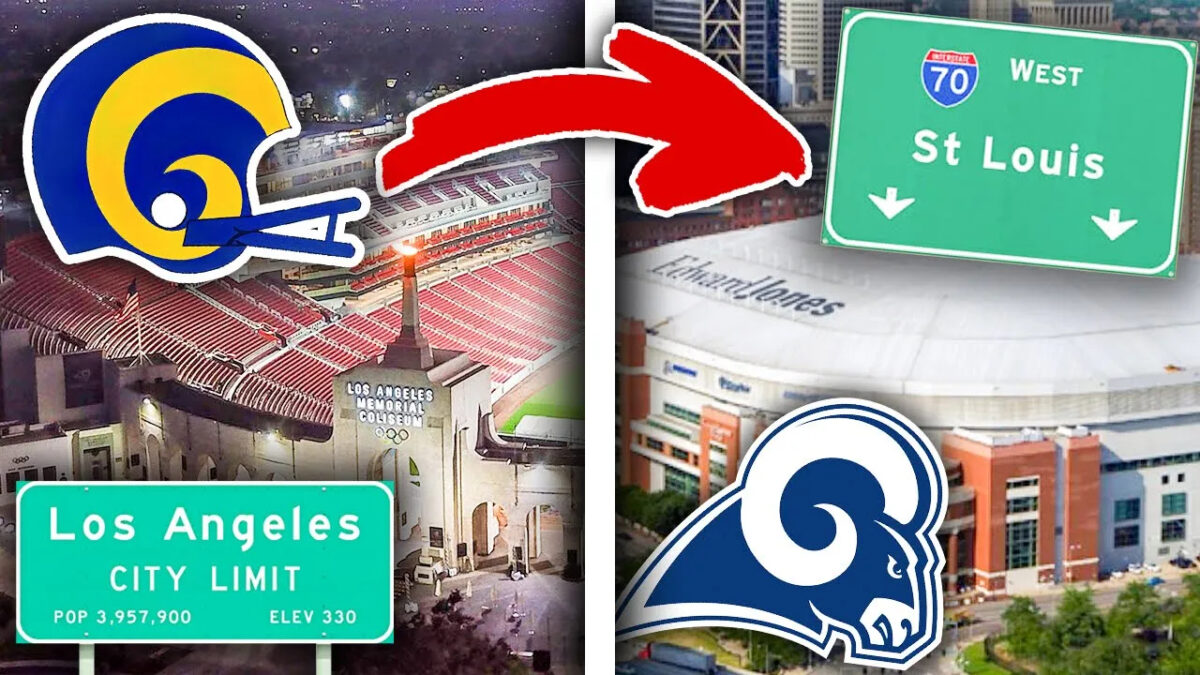
There have been 10 NFL relocations in the Super Bowl era. Some, of course, turned out to be for the better. Others? Well, let’s just say that not all moves work out the way you’d hope.
In this video, we’re ranking all 10 franchise relocations during the Super Bowl era, based on the overall team success, the fanbase, attendance and general following that they’ve been able to generate following the move. So let’s get right into it.
10. San Diego Chargers To Los Angeles
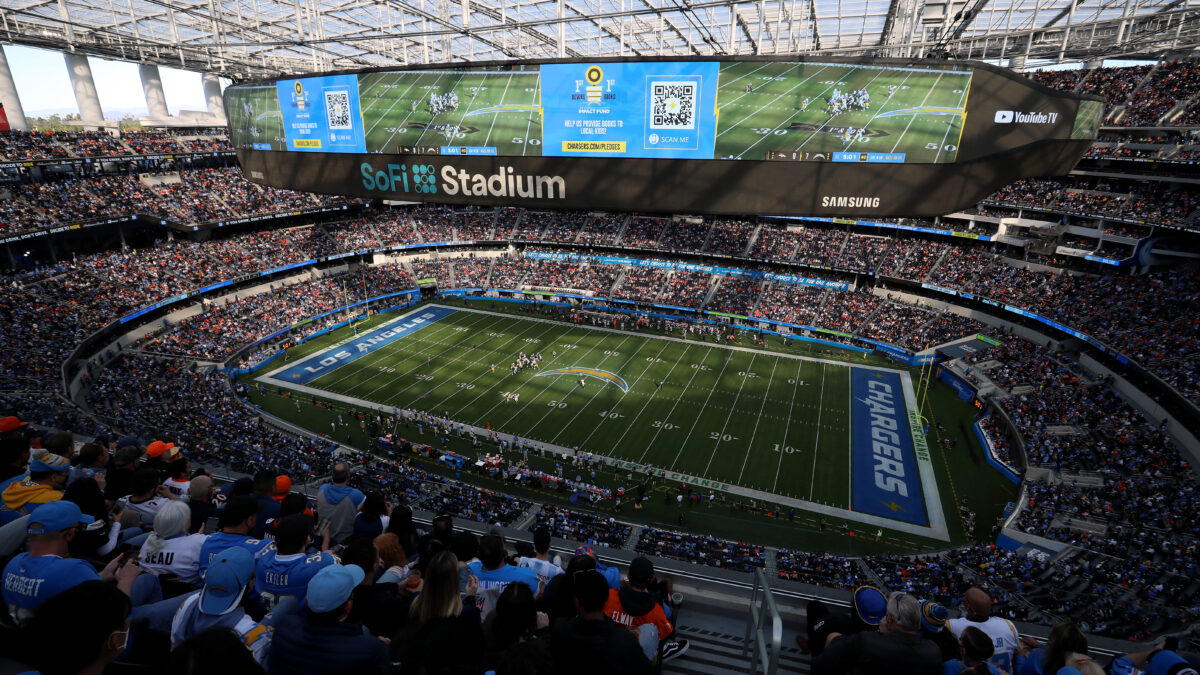
It’s way too early to guess how this will all play out. The Chargers only moved from San Diego to LA in 2017. So far…the only positive is the fact that…the team plays in a bigger market?
The Chargers had a great following and an extremely passionate fanbase in San Diego. It’s disappointing that owner Dean Spanos turned his back on the loyal folks there by moving his team—rather than working harder to get a new stadium in “America’s Finest City.”
Yes, Qualcomm was outdated and needed to be replaced. But it’s not like L.A. was in desperate need of a team that they could call their own. For starters, it’s not the biggest football city. And the city had just been given the Los Angeles Rams — more on them later.
During the Chargers’ first three seasons in LA, you often noticed far more away team fans than home supporters. That’s all you need to know about this relocation, really.
Click on ‘Follow Us’ and get notified of the most viral NFL stories via Google! Follow Us
Will the arrival of Justin Herbert and the shiny new SoFi Stadium in Inglewood help the Chargers develop the type of loyal fanbase they had in San Diego? Only time will tell, but so far, this relocation has been among the worst in sports history.
9. Oakland Raiders To Las Vegas
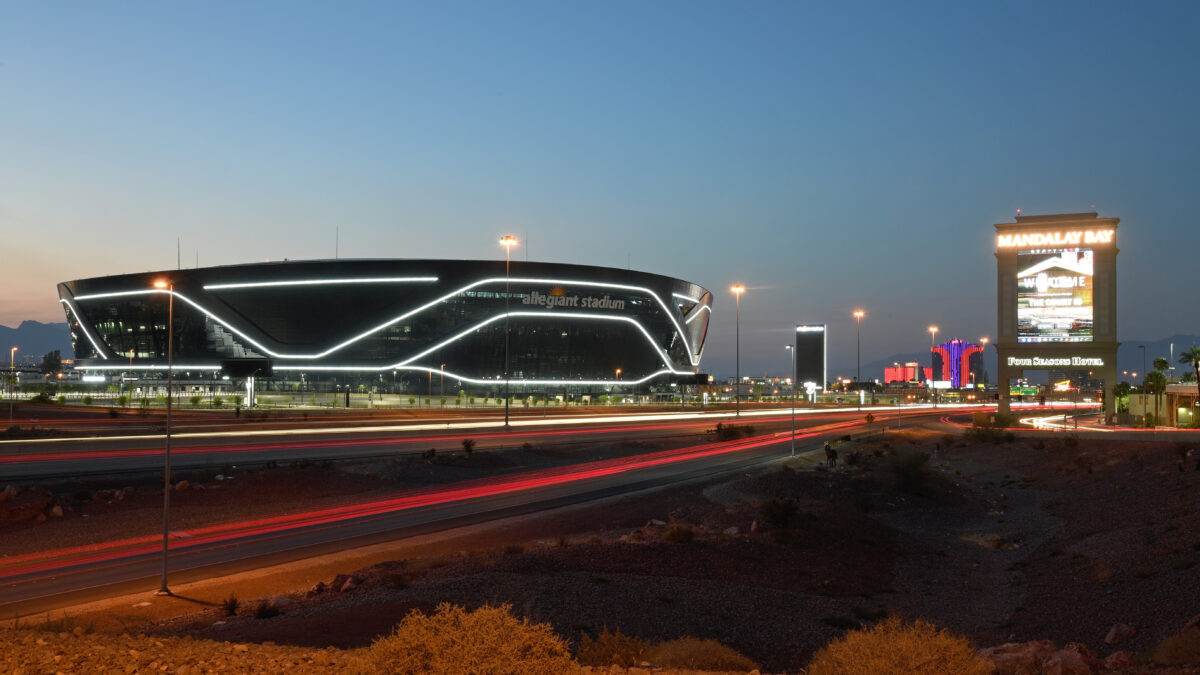
Yes, this is the most recent NFL relocation. And who knows? Maybe over the long run, this will go down as one of the most successful franchise relocations in North American sports.
But to us, the Raiders’ relocation to Las Vegas felt very similar to the Chargers’ move to Los Angeles. It was cruel to see owner Mark Davis just give up on the extremely loyal and devoted Oakland fanbase.
Even though this team was consistently near the bottom of the standings, the Oakland Coliseum was one of the rowdiest venues for an NFL game. The fans themselves made Raiders football watchable, even during the bad years.
So yeah…that’s the main reason why we have the Raiders on this list. Also, we just don’t see a positive long-term outlook for this team. They’re stuck in neutral under Jon Gruden and Mike Mayock. They’ve wasted so much money in free agency and valuable draft capital. The Raiders will have no problem selling a lot of tickets in Sin City. But will Vegas will grow to love and appreciate this team as much as Oakland did? That’s the bigger question here
8. St. Louis Rams To Los Angeles
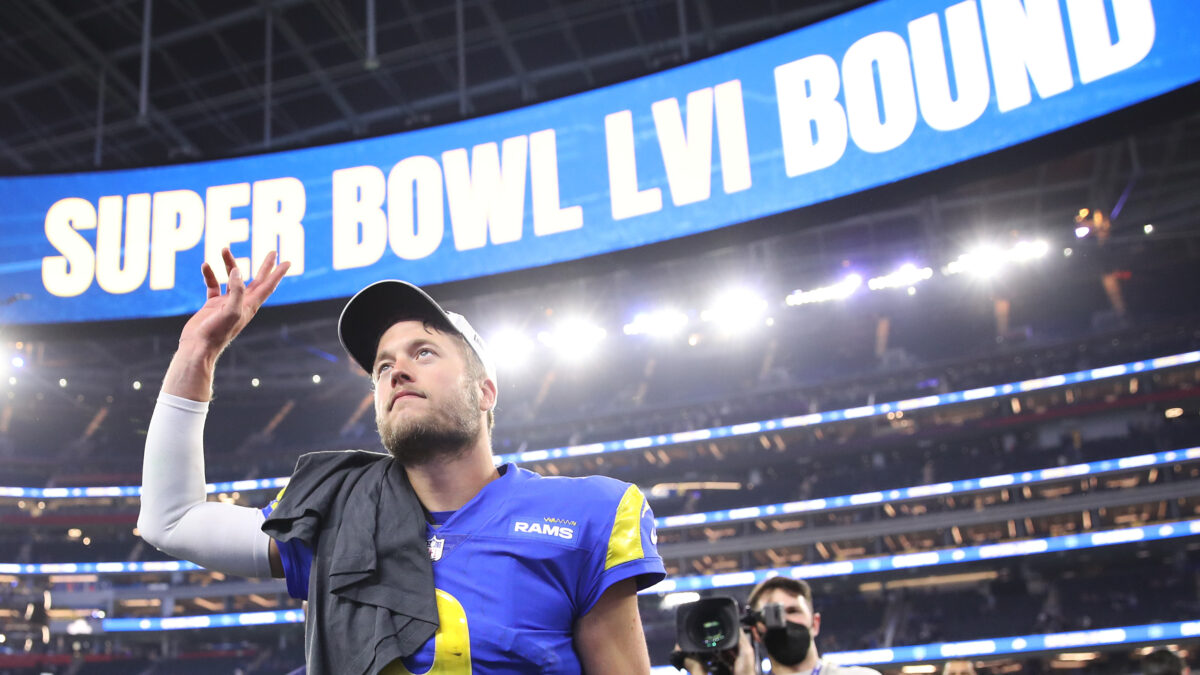
Here’s another relocation that you can file under, “too early to tell.” Who knows how everything will play out here over the next five to 10 years?
Unlike the Chargers and Raiders, however, the Rams have at least turned a corner since moving to their new city. The likes of Sean McVay and Aaron Donald have helped turn this group into a winner, and they even made it all the way to Super Bowl 53.
It’s just sad that, based on all their success and a star-studded roster, they haven’t been able to develop a larger following in the City of Angels.
But we feel like this can change over time, as long as the team continues to win. And the move into SoFi Stadium should help them attract even more fans. Like we said, the Rams are a bigger deal in LA than the Chargers. So that at least counts for something.
7. Oakland Raiders to Los Angeles
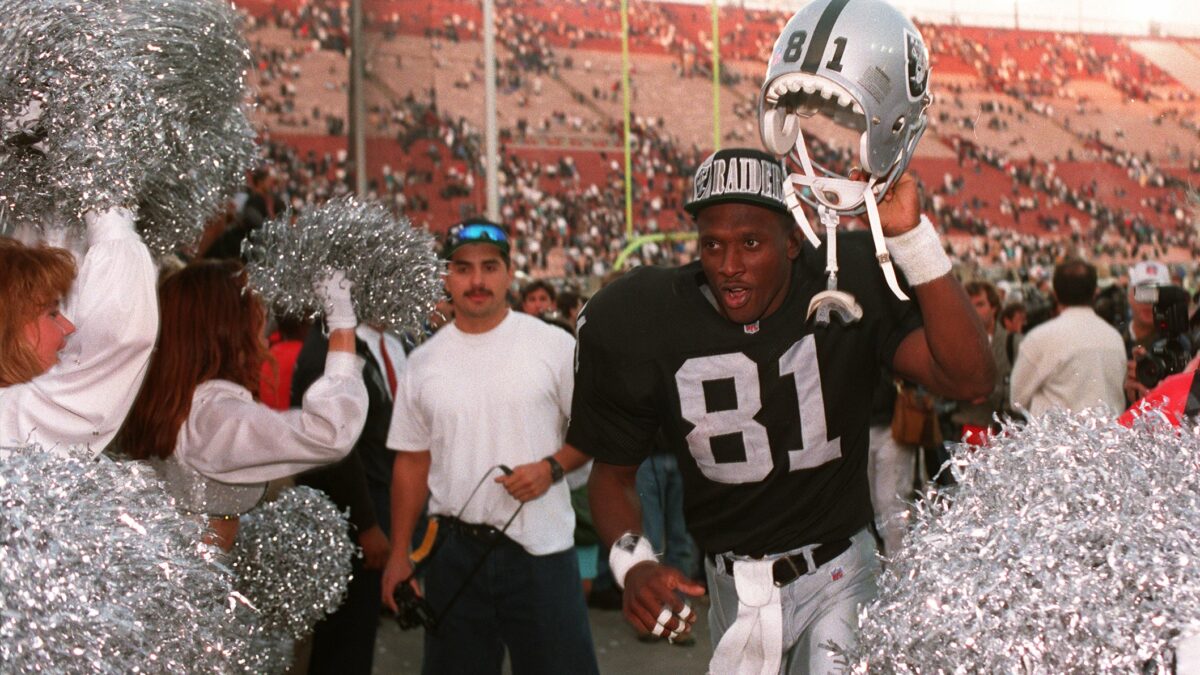
The Raiders played in Oakland from 1960 — their inaugural season — to 1981, before relocating to Los Angeles in 1982.
Then-owner Al Davis tried relocating the franchise because city officials wouldn’t provide him with the necessary upgrades for the Coliseum. His efforts to relocate the club were blocked, but Davis managed to win an antitrust lawsuit that allowed him to finally move the team to LA.
The Raiders won two Super Bowls in the ‘70s. They managed to achieve “dynasty” status by winning Super Bowl 18 over the powerhouse Washington team in the 1983 season — their second year in LA.
During their time in LA, the Raiders went to the playoffs seven times. This included four division titles and a trip to the Super Bowl. Their stay here wasn’t all that long, but there was far more good than bad!
6. Los Angeles Raiders To Oakland
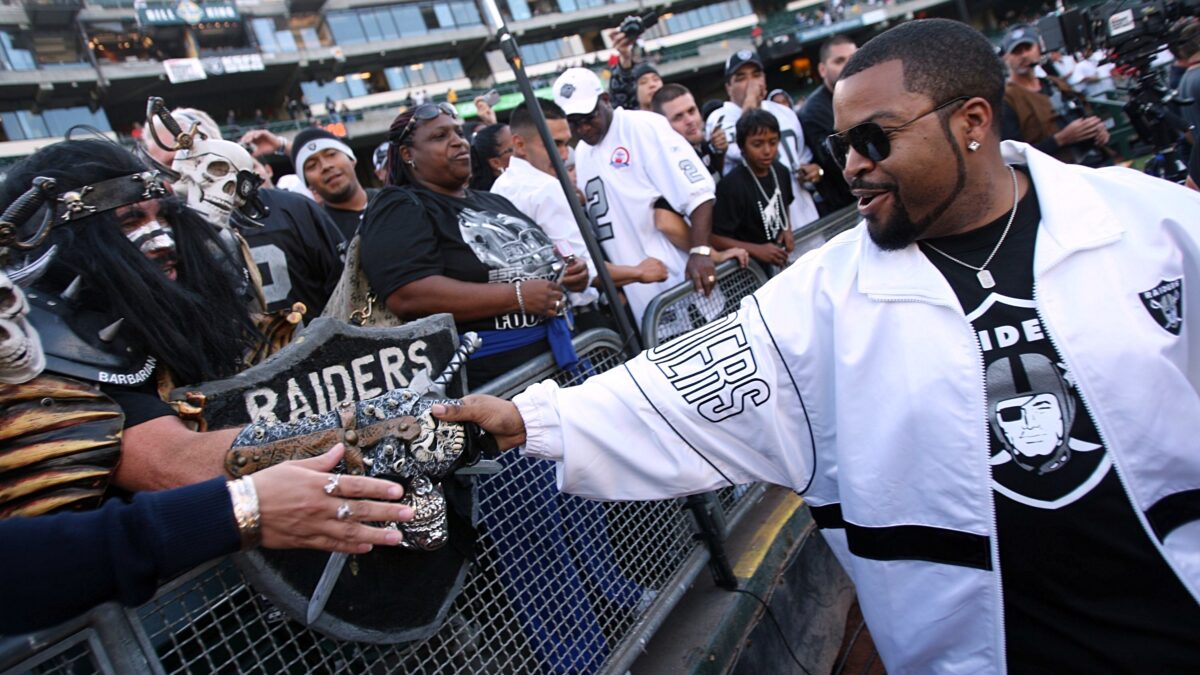
After the 1994 season, Davis decided to move the Raiders AGAIN. Attendance was low in Los Angeles and it led to games being blacked out. Davis was also promised that the LA Memorial Coliseum would see upgrades to its luxury suites.
That never happened, and after a near-move to Sacramento, the team wound up moving back to Oakland — where they would stay for a quarter century.
As we mentioned earlier, the Raiders were loved and admired by the fans in Oakland. The support from the fanbase is what made this relocation work, as the actual team enjoyed very limited success after moving back to Oakland.
Charles Woodson, Rich Gannon, Tim Brown and Jerry Rice put the Raiders back on the map in the early 2000s. This team went to the 2000 AFC Championship Game and could have won Super Bowl 36 the following year if it weren’t for the controversial Tuck Rule game.
The Raiders, of course, went on to reach Super Bowl 36, where they were blown out by the Tampa Bay Buccaneers. They never won another postseason game in Oakland, and the franchise made the playoffs just once more — in 2016.
Years of terrible drafting and recycling through head coaches made the Raiders one of the NFL’s worst teams during their final 17 years in Oakland. But at least there was a strong following in the city. They might have a tough time replicating that in Las Vegas.
5. St. Louis Cardinals To Phoenix
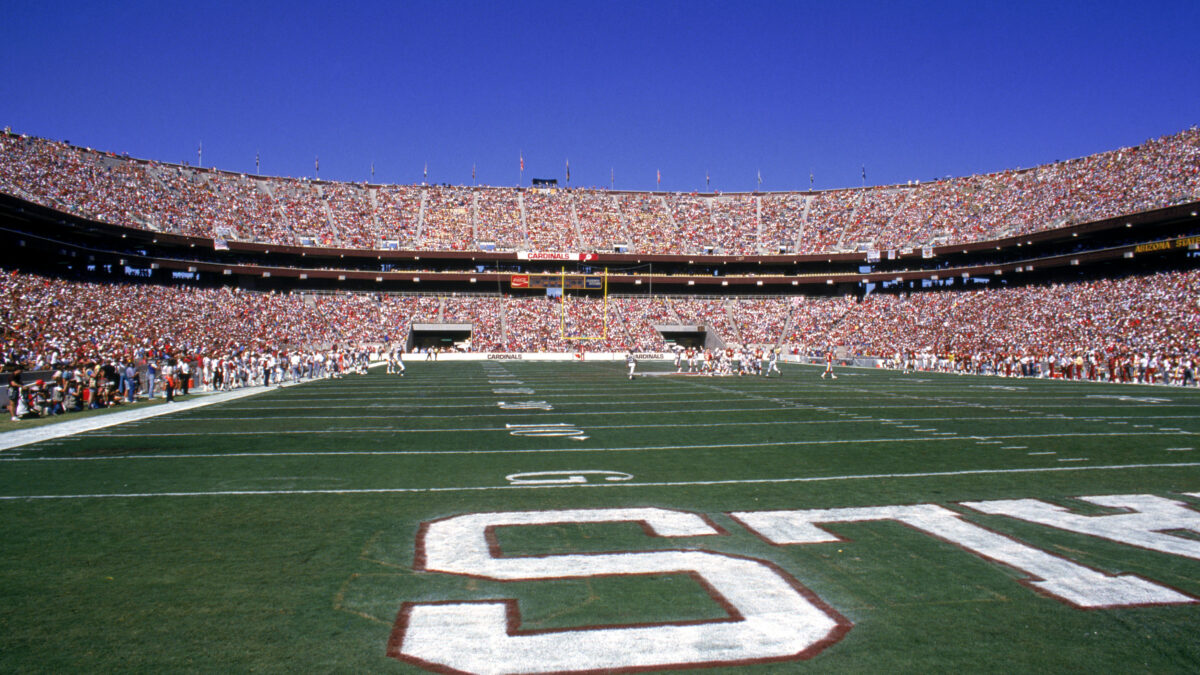
The Cardinals relocated from Chicago to St. Louis in 1960. The good folks in St. Louis didn’t get to celebrate a whole lot, however. The franchise only made the postseason three times during their 28-year stay in the city.
The Cardinals would relocate to Phoenix in the 1988 season because of a giant decline in attendance as well as the state of the worn down Busch Stadium. They changed the name from “Phoenix Cardinals” to “Arizona Cardinals” in 1994.
Though the Cardinals haven’t been much of a winner since the relocation, there have been some positives.
For one, the state of Arizona happily welcomed the Cardinals with open arms. State Farm Stadium is home to one of the best NFL atmospheres. And hey, the Cardinals did make a Cinderella run to Super Bowl 43, narrowly falling to the Pittsburgh Steelers.
As for the city of St. Louis, they eventually got their football team back in 1995, when the Los Angeles Rams relocated there. And they won a Lombardi Trophy too, after the Greatest Show on Turf took home Super Bowl 34 .
Meanwhile, the Arizona Cardinals made the postseason five times alone from 1998 to 2015, including two trips to the NFC Championship Game. Very good results, considering the team didn’t win a single postseason game while in St. Louis.
Yep, this relocation was a home run for Arizona, the NFL and the Bidwill family.
4. Los Angeles Rams To St. Louis
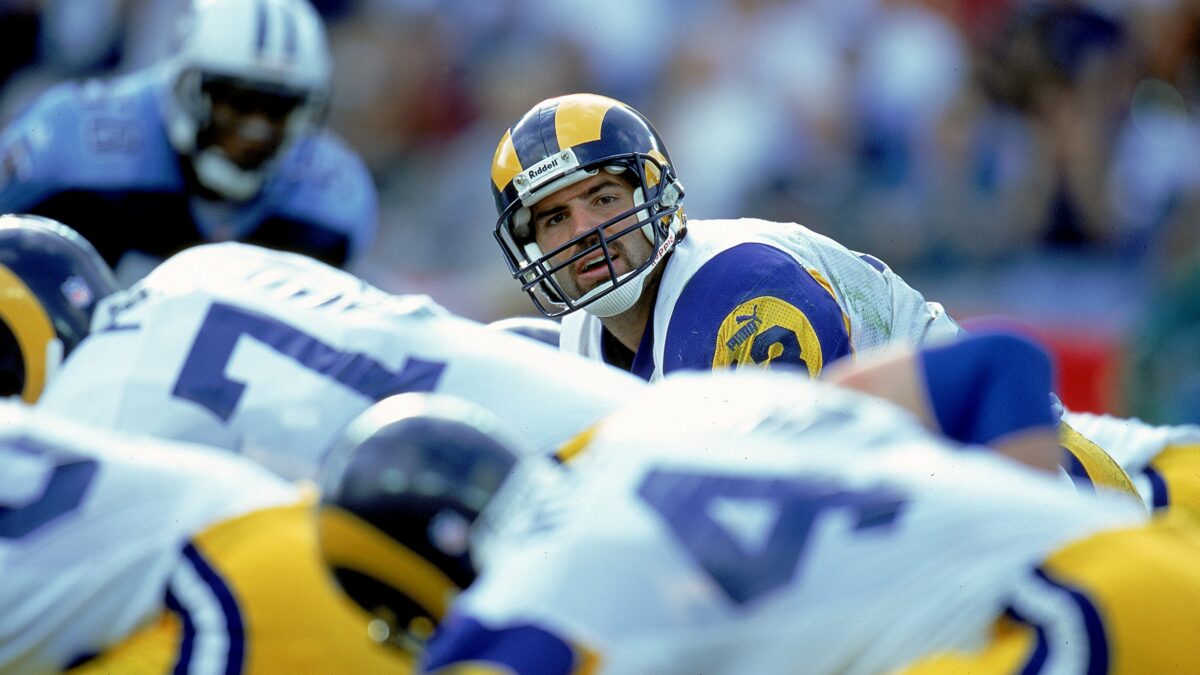
Then-Rams Owner Georgia Frontiere decided to move the Rams to St. Louis in 1995, largely thanks to the fact that they had the brand new “Trans World Dome” open and ready to welcome an NFL team.
It was double heartbreak for Los Angeles football fans, though. They lost the Raiders to Oakland and the Rams to St. Louis. But of course, fast forward to the present day and they now have two football teams again!
At any rate, the Rams’ 21-year stay in St. Louis can’t be regarded as anything but a general success. Led by head coach Dick Vermeil and Hall of Famers Kurt Warner, Marshall Faulk and Isaac Bruce, the Rams emerged as an NFC heavyweight in the late ‘90s.
The Rams, of course, won Super Bowl 34 over the Tennessee Titans – as we mentioned earlier. They also reached Super Bowl 36 and narrowly fell to the New England Patriots.
They made the playoffs five times in a six-year span from 1999 to 2004. The franchise never reached the postseason again in their final 11 seasons there.
Nearly three decades after losing the Cardinals to Phoenix, the city lost its Rams when Stan Kroenke relocated his football team to Los Angeles in 2016. A key factor? Yep, the creation of the brand new SoFi Stadium that gave the football team a suitable long-term home – something they apparently couldn’t find in St. Louis.
But for lifelong Rams fans, the initial move from L.A. to St. Louis was well worth it. Two NFC Championships and a Super Bowl victory? A lot of NFL fan bases can only dream of that.
3. Houston Oilers To Nashville
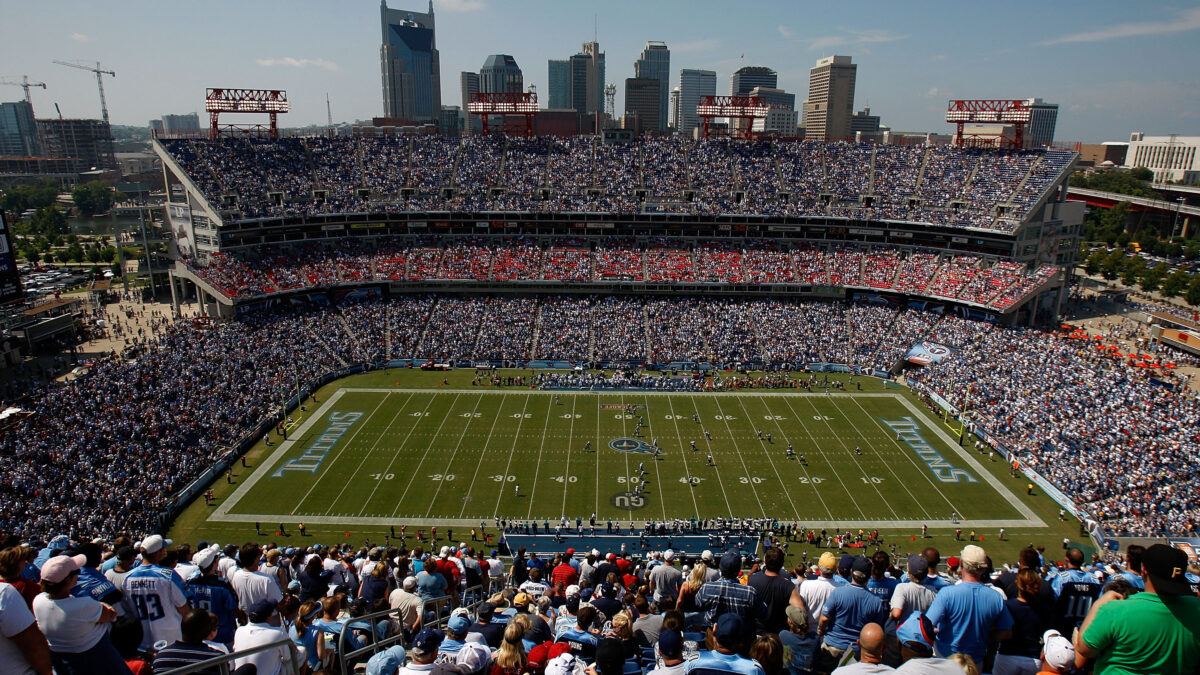
The city of Houston had the Oilers to root for from their inaugural 1960 campaign up until 1996, before then-owner Bud Adams relocated the franchise to Music City.
The Oilers and MLB’s Astros shared the Astrodome, which was outdated and in need of massive renovations. Adams had his eye on the state of Tennessee, which didn’t have a professional sports team at the time; the NHL’s Predators and the NBA’s Vancouver Grizzlies relocated to Memphis later on.
The city of Nashville offered Adams everything he wanted: The market, the passionate fanbase and of course a new stadium, something he couldn’t agree upon with Houston city officials.
The Oilers moved to Tennessee in 1997. They kept the “Oilers” name for two years while playing home games at the Liberty Bowl Memorial Stadium in Memphis.
The franchise then moved to the brand new Adelphia Coliseum in Nashville, and their name was changed to “Titans.”
The changes paid off immediately. Led by Steve McNair and Eddie George, the Titans advanced all the way to Super Bowl 34 — their first appearance in the big game. They narrowly lost a thriller to the Rams, but the Titans remained a force in the AFC for the next decade.
They reached the postseason five times from 2000 to 2008. This included two trips to the AFC Championship Game and three division titles.
The Titans emerged as a contender again in 2019 under the guidance of Derrick Henry, Ryan Tannehill, AJ Brown and Mike Vrabel — going all the way to the AFC Championship Game that year. The Titans followed it up by claiming the AFC South division crown in 2020, their first division title since 2008.
And so, the Titans have enjoyed a good amount of winning in two decades-plus since relocating. And even though the fanbase isn’t huge outside of Tennessee, the state absolutely loves their Titans. Attendance is consistently high, too.
Oh, and Houston got its football team back in 2002 when the Texans entered the league as an expansion franchise. Win-win all around, folks!
2. Baltimore Colts To Indianapolis
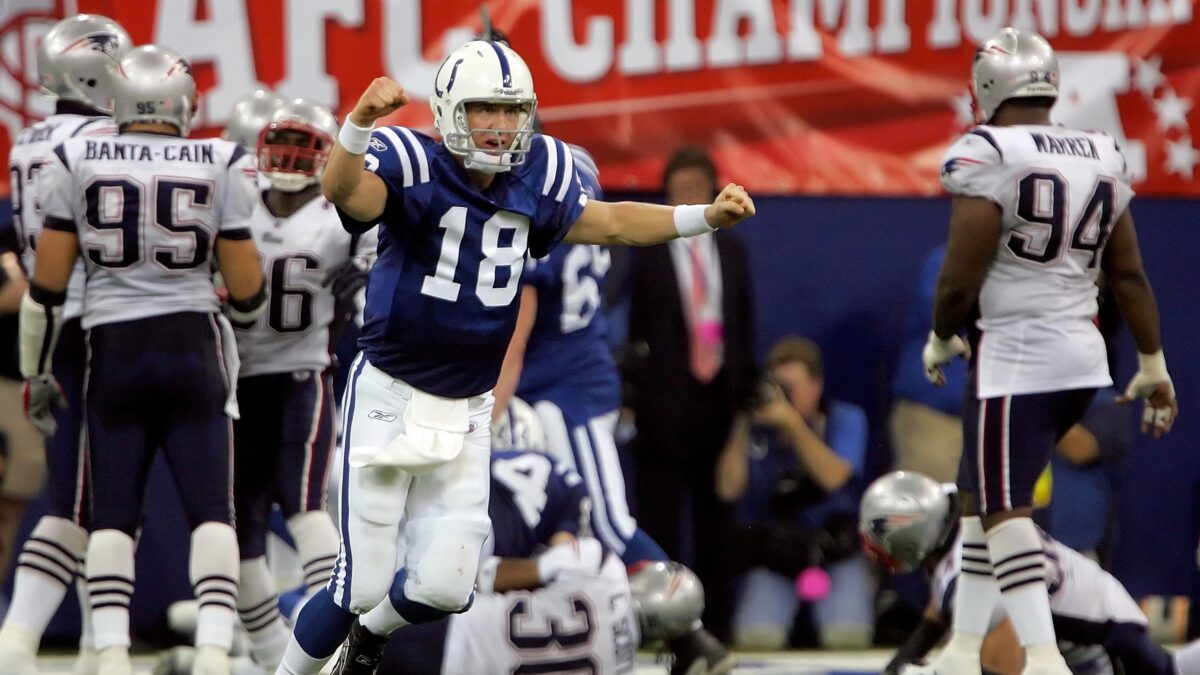
Baltimore Colts owner Robert Irsay became public enemy No. 1 when he relocated the franchise to Indianapolis in 1984. The factors? A major drop in attendance, a worn out Memorial Stadium and a promise from Indianapolis that he could use the Hoosier Dome, which served as the Colts’ home until 2007.
Whether Baltimore fans like it or not, the move has been a giant success in just about every aspect. The Colts became a top NFL club following the arrival of Peyton Manning in 1998. He led this franchise to the postseason 11 times, including a pair of AFC Championships and a Super Bowl 43 victory.
The Colts also enjoyed lots of winning during the rather short Andrew Luck era; as he took them to the postseason four times.
And obviously, Indianapolis has been such a great NFL market. Manning and Luck put this franchise on the map. If the city didn’t like its Colts all that much, Lucas Oil Stadium wouldn’t have opened in 2008, now would it?
1. Cleveland Browns To Baltimore
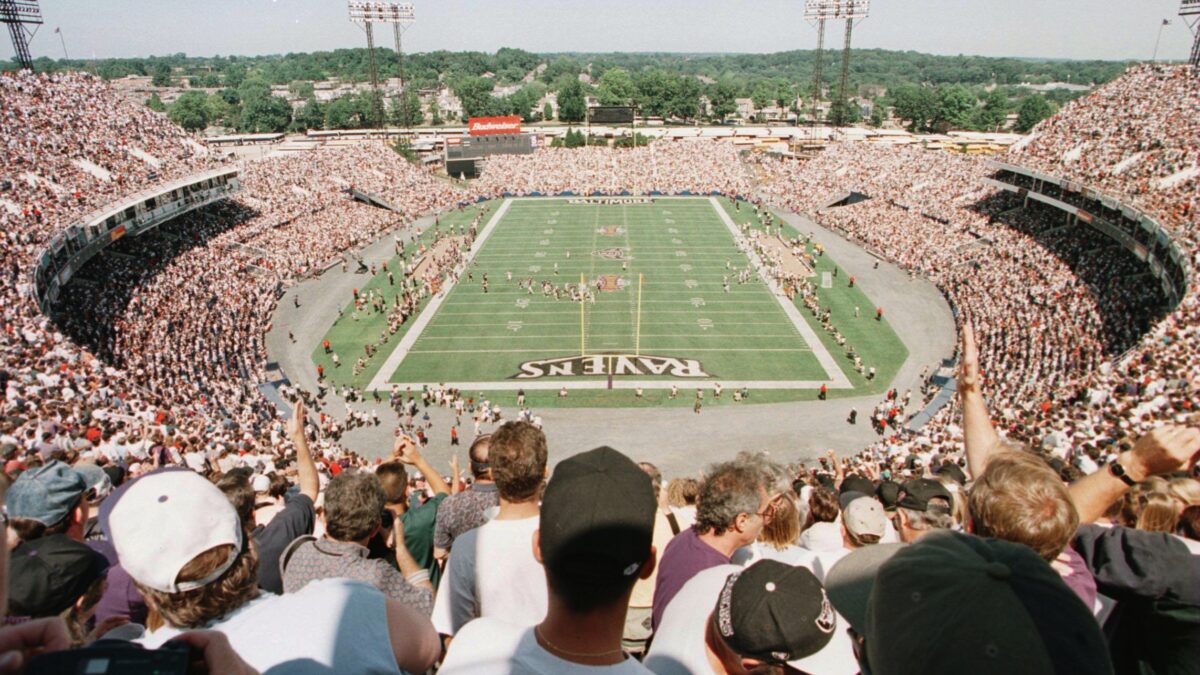
The Ravens were designated as an expansion franchise in 1996. But technically speaking, they were a relocated franchise.
Owner Art Modell broke all the hearts in Cleveland when he controversially moved the historic Browns franchise to Baltimore for the 1996 season.
Modell was discontent with the state of Municipal Stadium. And he was able to work out an agreement to get a much-needed new stadium with the city of Baltimore.
A tense relationship with the city of Cleveland also played a factor in Modell’s decision to move the franchise. Well, everything worked out for the better in the long run.
Baltimore got its football team back after losing the Colts to Indianapolis. The team has gone on to win two Super Bowls — in the 2000 and 2012 seasons. They’ve been a consistent winner since the relocation.
As for Cleveland? Well, the Browns football team was reactivated in 1999, so there’s that. Both cities have passionate fanbases. That’s obviously great for business. But the Ravens’ two championships are the key reason why this marks the most successful NFL relocation in the Super Bowl era.
Which NFL relocation do you think has been the best in the Super Bowl era?


